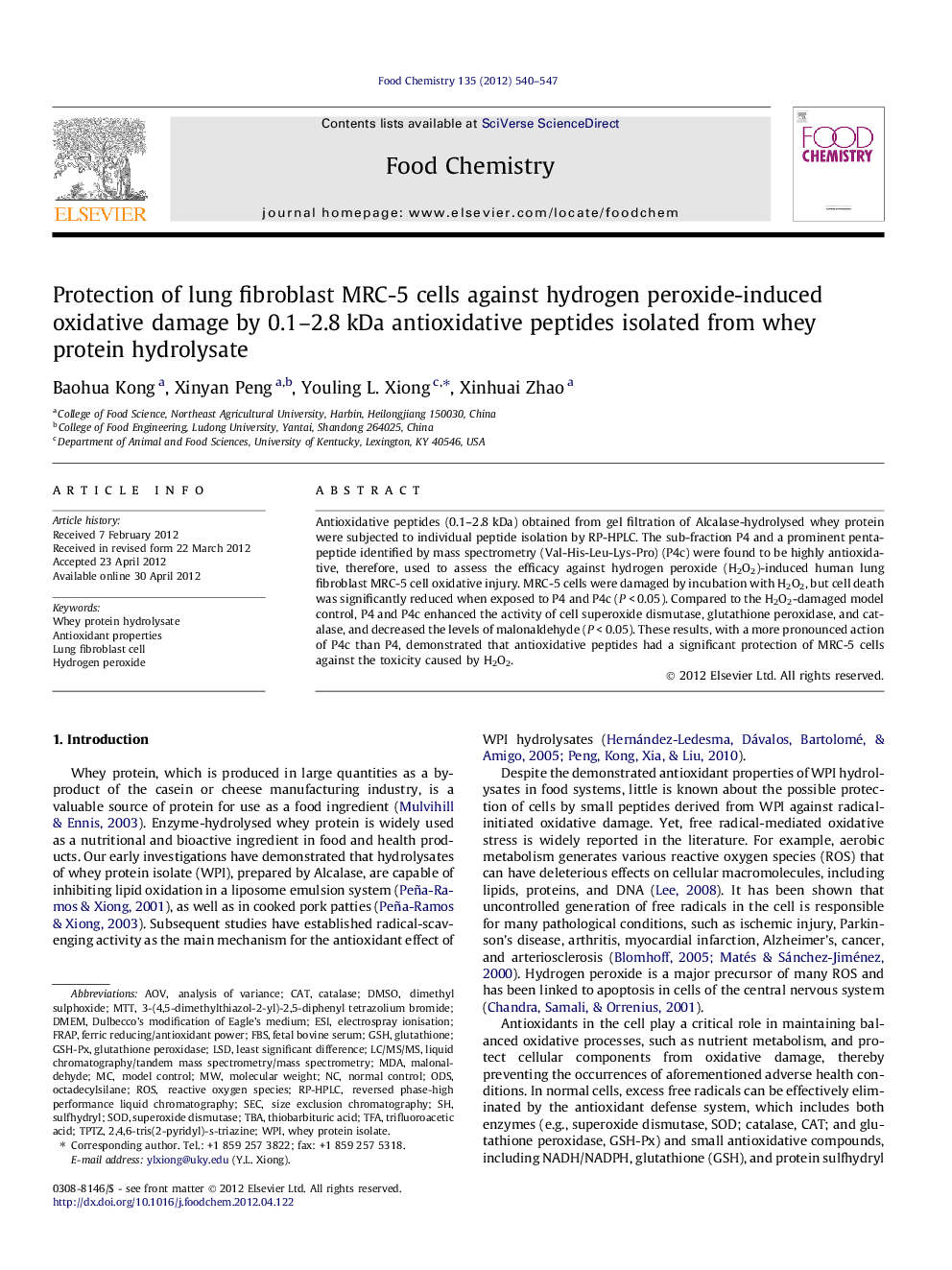| Article ID | Journal | Published Year | Pages | File Type |
|---|---|---|---|---|
| 1185767 | Food Chemistry | 2012 | 8 Pages |
Antioxidative peptides (0.1–2.8 kDa) obtained from gel filtration of Alcalase-hydrolysed whey protein were subjected to individual peptide isolation by RP-HPLC. The sub-fraction P4 and a prominent pentapeptide identified by mass spectrometry (Val-His-Leu-Lys-Pro) (P4c) were found to be highly antioxidative, therefore, used to assess the efficacy against hydrogen peroxide (H2O2)-induced human lung fibroblast MRC-5 cell oxidative injury. MRC-5 cells were damaged by incubation with H2O2, but cell death was significantly reduced when exposed to P4 and P4c (P < 0.05). Compared to the H2O2-damaged model control, P4 and P4c enhanced the activity of cell superoxide dismutase, glutathione peroxidase, and catalase, and decreased the levels of malonaldehyde (P < 0.05). These results, with a more pronounced action of P4c than P4, demonstrated that antioxidative peptides had a significant protection of MRC-5 cells against the toxicity caused by H2O2.
► Oligopeptides from hydrolysed whey protein inhibit peroxide stress. ► Whey peptides reduce oxidation-induced damage to lung fibroblast cell. ► Whey peptides promote the activity of cellular antioxidant enzymes. ► Suppression of lipid oxidation in MRC-5 cells by whey peptides.
